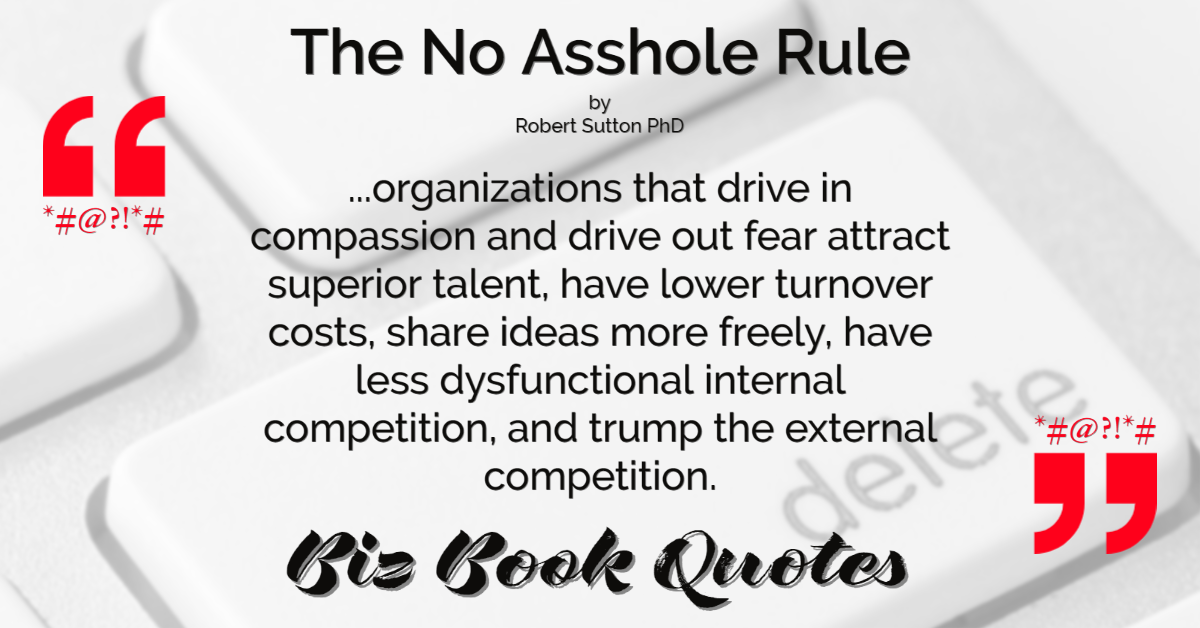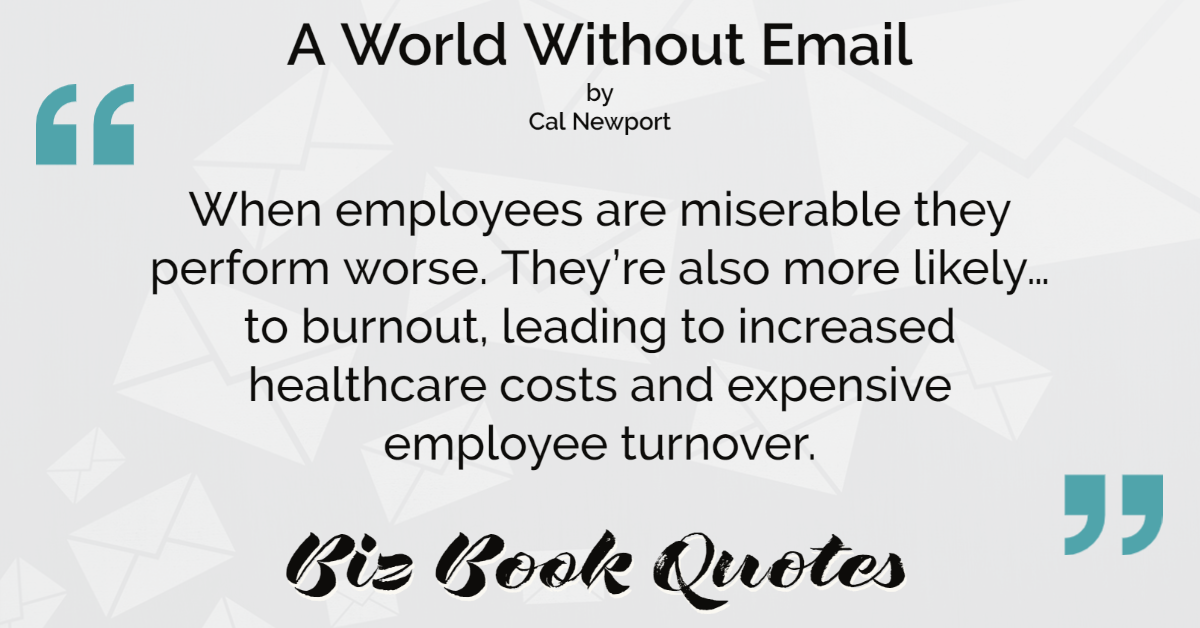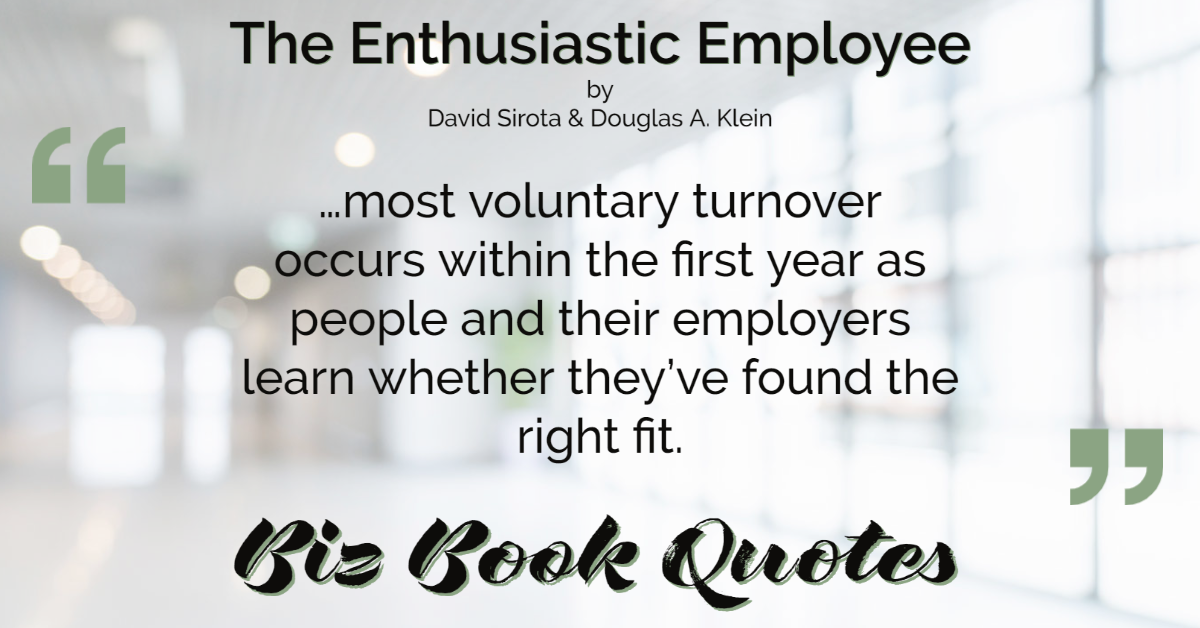 |
Low trust creates disengagement, which leads to turnover – particularly of the people you least want to lose.
|
252 |
 |
When trust inside an organization is low, it gets perpetuated in interaction in the marketplace, causing greater turnover among customers, suppliers, distributors, and investors.
|
253 |
 |
Anytime your company breaks through the ceiling and goes to the next level, it is going to experience some turnover.
|
149 |
 |
Gallup discovered that the No. 1 reason people change jobs today is ‘career growth opportunities.’ And that reason is on the rise.
|
97 |
 |
The loathing and dissatisfaction that assholes provoke has costs in addition to increased turnover.
|
40 |
 |
…organizations that drive in compassion and drive out fear attract superior talent, have lower turnover costs, share ideas more freely, have less dysfunctional internal competition, and trump the external competition.
|
172 |
 |
When employees are miserable they perform worse. They’re also more likely… to burnout, leading to increased healthcare costs and expensive employee turnover.
|
38 |
 |
…most voluntary turnover occurs within the first year as people and their employers learn whether they’ve found the right fit.
|
78 |
 |
…healthy turnover [occurs] because people should not stay in jobs they dislike, and organizations should not want them to stay.
|
302 |
 |
When all trust is broken down, a company can never function at an optimum level; the company will experience a high level of employee turnover, and that company will be average at best.
|
098 |